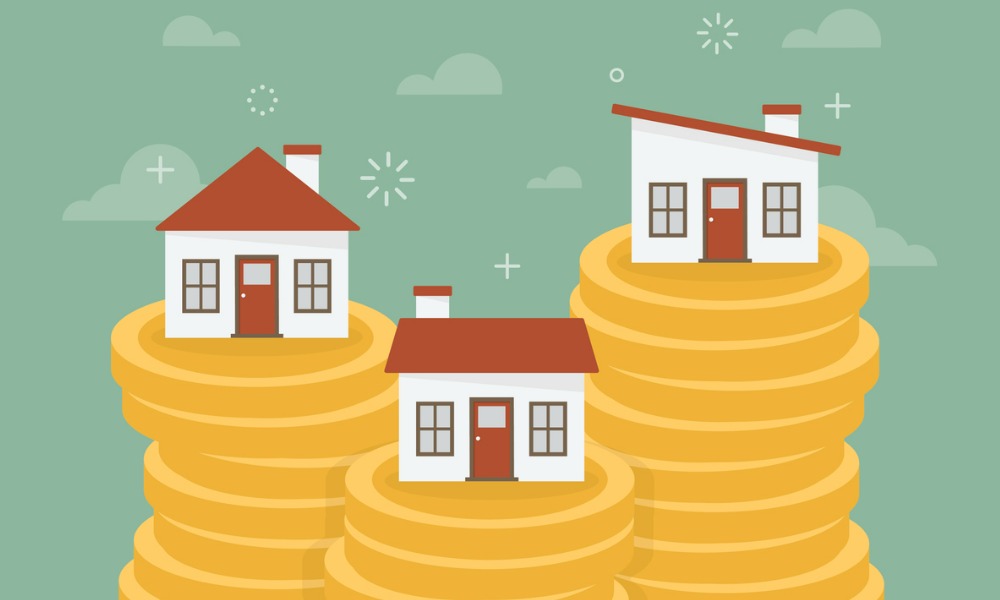They continue to climb, but are showing signs of slowing down

The average price of a UK home has broken through the £250,000 barrier for the first time, hitting a new record of £250,200 in April, according to the latest Zoopla House Price Index.
House prices rose by 8.4% during the year to the end of April, but the market is showing signs of slowing with the latest growth rate slightly down from the annual rate of 9% recorded in March.
“The annual rate of price growth will ease this year, on a monthly basis, price growth has already moderated,” Gráinne Gilmore, head of research at Zoopla, said.
“A continuation of this trend, even with some small monthly declines, means price growth will reach 3% by the end of the year.”
Property values edged ahead by just 0.2% during April itself, compared with monthly gains of 0.7% at the start of the year.
Aside from that, both the time taken to sell a home and the number of properties selling for a discount has increased, Zoopla revealed.
Read more: Housing boom could end soon – Nationwide.
But while the rate at which property values are rising is likely to ease during the rest of the year, expert house prices are not expected to fall.
“Given the number of homeowners on fixed-rate mortgages, which protect them against interest rate rises in the short to medium-term, the stress tests carried out on those loans, and the healthy employment market, we are not expecting a raft of forced sales in 2022, which is usually the trigger for price falls,” Gilmore explained.
Wales saw the strongest price gains for the 15th consecutive month, with property values rising by 11.6%, although this was down from the growth of 13% recorded in February. Wales was followed by the South West at 10.5% and the East Midlands at 10.2%.
Meanwhile, London continued to lag compared with other regions, posting growth of just 3.6%.
In terms of individual cities, those where property remains more affordable continue to see the strongest value gains.
Nottingham led the way with house prices increasing by 10% during the past year. It was followed by Liverpool at 9.9% and Bournemouth at 9.7%.
Zoopla said the housing market remains significantly busier than before the pandemic, but there are signs that activity is starting to slow. Demand continues to outweigh supply, with the number of potential buyers currently 61% higher than the five-year average. Meanwhile, the level of homes for sale is 37% lower than normal.
Read more: Supply vs demand: Which is higher in the UK?
But the number of properties being put up for sale is beginning to increase. The number of new listings in the four weeks to May 22 were 7% higher than the five-year average.
Homes also took longer to sell than during the previous month for nearly all property types.
For example, a three-bedroom property outside of London is now taking an average of 18 days for a sale to be agreed, compared to 16 days in March. In London, three-bedroom homes are taking an average of 21 days to sell, up from 17 days previously.
At the same time, there has been an increase in the number of properties where sellers have reduced the asking price by at least 5%. Since the second half of April, one in 20 properties listed has had a price reduction. This is compared with one in 22 in the previous 28 days. The average price reduction is 9%. For the typical house in the UK, this represents a discount of £22,500.
The North East has seen the highest number of homes that have been discounted by at least 5%, followed by the West Midlands.
Zoopla pointed out that the latest figures suggest the heat is starting to come out of the property market, which is good news for first-time buyers.
Sellers are showing signs of being more realistic about how much their home is worth, with one in 20 asking prices discounted by more than 5%.
The Zoopla House Price Index is a repeat sales-based price index using sold prices, mortgage valuations, and data for agreed sales. The index uses more input data and is designed to accurately track the change in pricing for UK housing.



